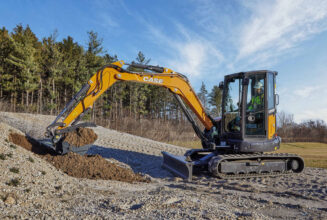Creating Nighttime Appeal
By Jeffrey R Dross
Outdoor property design has come a long way from picnic tables, folding aluminum chairs and poured concrete slabs that served as patios. A dry stacked stone wall was as close as a homeowner got to “hardscape.” The changes from these simple beginnings have been enormous, but one detail can raise those improvements to yet an entirely new level — lighting.
Hardscape
Amazing installations are being created with stone. Multi-level, multi-functional spaces are transforming a simple backyard into an oasis for entertaining and relaxation. Stone terraces border swimming pools, elevated plains adjoin exterior kitchen areas, and integrated stone benches overlook garden and planting areas. Beautiful during the day, these areas can take on rapturous appearances at night — if lit well. Well-placed hardscape lighting can be achieved with a little imagination, a bit of pre-planning and a touch of desire.
Hardscape elements in a yard are justly named because they are literally built of stone. Heavy masonry is permanently assembled, so it is vitally important to design the lighting before work begins on the wall. To begin the design process, think about the space and its use. Look for steps, changes in elevation and areas that meet the landscape. Each of these areas can benefit from light. Then think about beauty and aesthetics. What will make the hardscape more attractive, thereby adding interest to the landscaping, yard and surroundings? Finally, determine placement for power. Low-voltage landscape lighting is operated by a large transformer that converts the 120V power in your home to 12 volts and as such, must be plugged into a grounded convenience outlet (GCO.) Most homeowners prefer to have the transformer out of sight.
Now, match a lighting product to the task.
There are several options for lighting masonry steps. If the riser or stringer/side wall is constructed of conventional-sized bricks, a brick light is matched to those specifications and can easily be built into the construction. A smaller step light could be built into these areas, but might require added stonework to provide an appropriately sized opening in which to mortar the housing. Finally, hardscape-specific lights can be assembled under the stone tread. Care should be taken to ensure an adequate amount of overhang to prevent glare and avoid mobility interference.
The most common method of adding visual interest to a hardscape wall is the insertion of hardscape-specific light under the capstone. These units can be mortared into the joint or screwed in place with the aid of masonry fasteners. The hardscape lighting does a nice job, but care should be taken regarding glare. If the wall is especially high, or if the wall is extremely close to a seating area, the user may be exposed to an unwelcome glint of light. Alternate elevations can be considered, and would provide some added visual excitement within the design. If an alternate position is not possible, a wall wash may be in order. A wall wash is a lighting fixture that mounts close to the intended illuminated surface and provides an extremely wide spread of light. Another option is to install a simple accent light with a wide-beam light source at an angle to the wall, thereby creating irregular light patterns and interesting shadow lines.
Both the wall wash and accent light would require earth in front of the wall into which low-voltage cable would be buried; however, if the wall surrounds a concrete or stone floor surface, the lights will not work. A third option is wet-location LED tape. These systems typically require a unique power system and their wet-location connections can be large and problematic to hide, but they do emit an even, consistent line of light that can be appealing.
A variety of colors are also available, which can add an element of excitement to the space. While it may be effective to simply line the slender hardscape units, like solders along the capstone, it might not be visually interesting enough for the landscape design. Consider staggering the lights, using an assortment of lengths, and positioning them at multiple elevations. Creative placement will add excitement and dimension to an outdoor stone assemblage. These units are also very effective under stone benches for an added level of visual intrigue.
Finally, remember the wire. All of these lighting products must be connected to power via wiring, and the wiring should be as hidden as possible in order to maintain the beauty of the stone through daylight. If the hardscape is a retaining wall, the wire can easily pass through mortar joints to the earth behind the wall and appropriate connections are simple. Freestanding walls might be best served with a small cavity in the middle to accommodate wiring. Hollow stone can also serve as convenient wiring compartments, if the openings align. Once all of the wiring is complete and the cable is buried, remember to hide the transformer in a place that is easy to access, but difficult to see from the main outdoor activity.
With added lighting, the beauty of the stone assemblies will be magnified through the night.
Outdoor living spaces
The stone hardscape areas are likely a part of the greater outdoor living space. They can be used to envelop a conversation pit surrounding the outdoor fireplace or support an alfresco dining space. Sometimes, outdoor living is relegated to a multi-level deck or the simple patio of fifty years ago, refurbished to serve a new generation. Regardless of the venue, lighting can add personality and functionality here, too.
As with the design of hardscape lighting, start with a review of the space and an understanding of how it will be used.
Because of their popularity, an assortment of deck lighting has been engineered to ensure nighttime enjoyment of this extended living space. Lighting on each, or select posts, will provide a comfortable amount of light for evening socializing. Remember to illuminate steps and changes in deck elevation levels. The slender hardscape units used under the masonry cap can also be configured to mount under wood rails, floors and the support structure.
On ground-level patios, the challenges of lighting are a bit more complex, but can be handled equally well, if forethought is put into place. UL-listed outdoor portable lamps can add a wonderful touch of light to sitting areas, and promote reading later into the night than expected. Low-voltage path and spread lighting should be added to the landscape areas adjacent to the patio. The spill of light will accent the flowers and plants in addition to the floor surface, providing a nice connection between nature and the home. If the area is covered with a pergola, consider adding a low-voltage pendant or even a chandelier for a real statement piece. Finally, look for areas where moonlighting can be added. Low-voltage lighting mounted in trees, on the arbor or pergola roof, or somewhere else from above and aimed toward the living space below can create a magical, shadow-filled, even romantic environment in which to relax.
In outdoor food preparation areas, added lighting will be required to facilitate nighttime cooking. If the space is covered with a roof, many outdoor lighting families include a hanging pendant that matches the surface-mounted lighting on the home. This light will go a long way to ensure the burgers aren’t burnt on the grill. Surface-mounted lights also work well here.
Outdoor entertainment continues to be one of the most popular activities in America. Expenditures on outdoor living elements rise each and every year, even in tough economic times. With the addition of lighting, the enjoyment found in these areas will only increase.
Over his almost 40-year career, Jeffrey R. Dross has been involved in most every facets of the lighting business, has designed numerous residential installations and writes and speaks regularly on lighting. He is currently Kichler’s Corporate Director, Education and Industry Trends.


